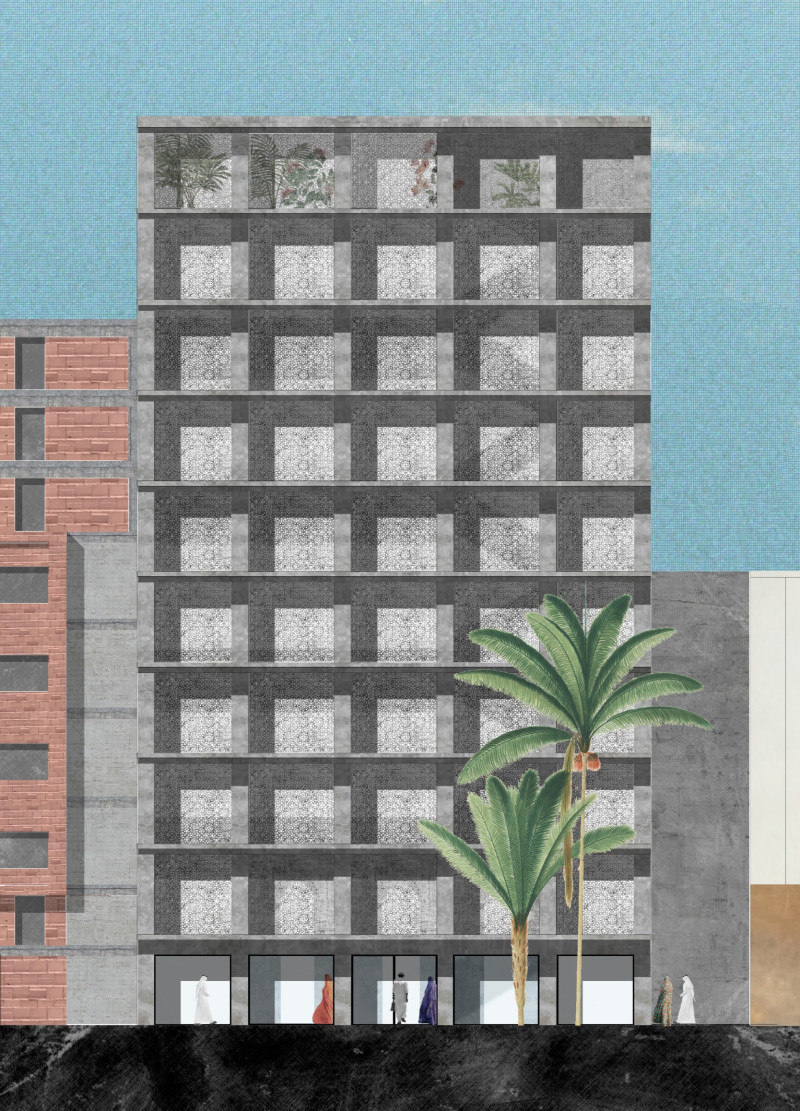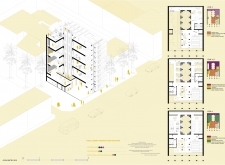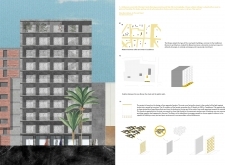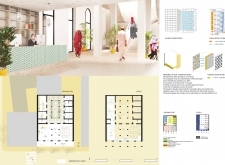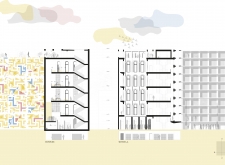5 key facts about this project
At its core, the project represents a commitment to innovative space utilization. The design prioritizes natural light and airflow, created through an intelligent layout that fosters connectivity between the interior and exterior. Large fenestrations dominate the facades, allowing patrons to engage with nature from within. This blurring of boundaries demonstrates a keen awareness of the psychological and physical benefits of green spaces, reinforcing the role of architecture in promoting well-being.
The function of the building revolves around its primary role as a multipurpose facility, serving varied community needs while accommodating a range of activities. Spaces are skillfully organized to foster collaboration and interaction among users. Gathering areas, workspaces, and private zones are distributed efficiently, enabling diverse functions to coexist within the same framework. As one traverses the building, the flow of movement is intuitive, allowing for spontaneous encounters which are crucial for inspiring community engagement.
In terms of materiality, the project employs a selection of sustainable materials that reflect a modern architectural sensibility and commitment to environmental responsibility. Key materials include locally sourced timber, which enhances the building's tactile quality and thermal performance. The extensive use of glass not only bolsters visual engagement with the surroundings but also helps to regulate indoor temperatures, reducing reliance on mechanical heating and cooling. Similarly, the incorporation of recycled materials illustrates a forward-thinking approach to waste reduction in architecture.
Unique design approaches are evident throughout the project, as the architecture integrates passive design strategies with cutting-edge technology. Solar panels and green roofs enhance the building’s energy efficiency and environmental footprint, while smart building technologies contribute to operational sustainability. This dual approach achieves a balance between aesthetics and functionality, showcasing how contemporary architecture can address pressing global challenges such as climate change.
The visual language of the structure reflects a democratic architecture, where each surface serves both form and function. Simple, clean lines characterize the design, while varied textures, introduced through both materials and finishes, create visual interest. The exterior palette is understated, allowing the surrounding landscape to take center stage, inviting users to immerse themselves in their environment.
Details within the project, such as the careful consideration of acoustics and lighting, enhance the occupants' experience, showcasing that attention to user comfort is paramount. The interplay of indoor and outdoor spaces, including terraces and gardens, invites a sense of tranquility amidst the busy urban setting.
This project undoubtedly highlights the evolving dialogue within architecture, as it gracefully navigates the complexities of modern living while remaining deeply rooted in local context. It serves as a model for future developments seeking to harmonize human needs with environmental stewardship.
For those looking to delve deeper into the project's intricacies, exploring the architectural plans, architectural sections, architectural designs, and architectural ideas will reveal a wealth of insight into how this design successfully embodies its principles, ensuring a lasting impact on both the community it serves and the environment it inhabits.


